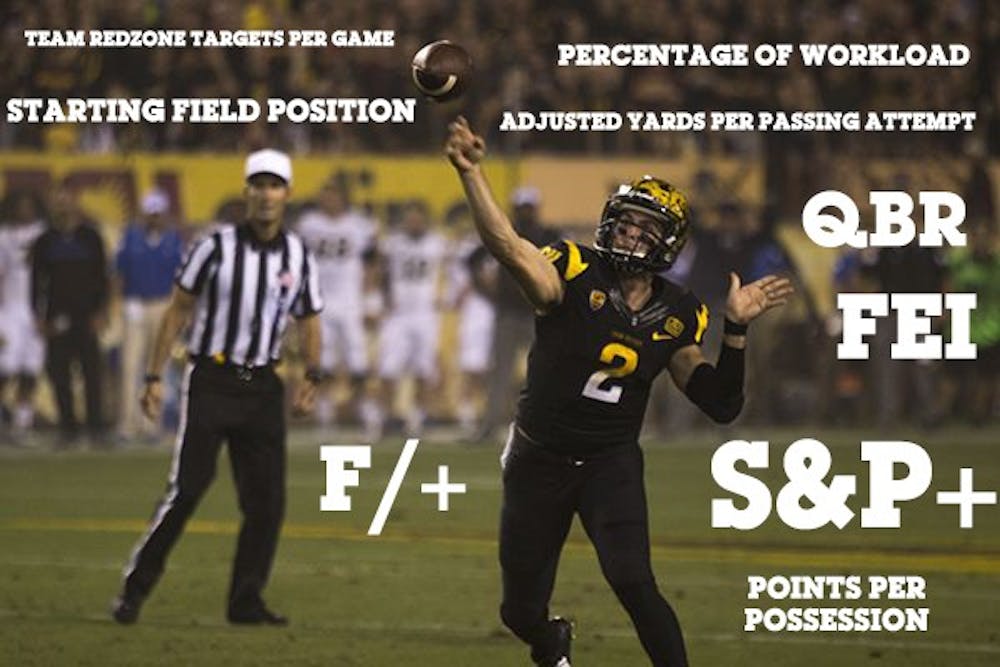In an increasingly data-driven world, number gurus in baseball and basketball operations departments are embracing the shift toward analytics in their philosophical methods of player development while coaches use them to dictate matchups and gameplay.
A majority of sabermetric statistics aren’t officially kept by the NCAA, but the concept has trickled down from MLB to the minor league and collegiate teams into the hands of scouts and fans.
Money is, of course, an inhibiting factor for some college baseball and even basketball programs at smaller schools that aren’t revenue generators.
I have one question for college football programs who receive superfluous annual amounts from large athletic department budgets, and the NFL, a $10 billion juggernaut which finally ended its tax-exempt status in April: What gives?
To the traditional audience, football is a game of brute strength and a display of extreme athleticism when stripped down to its bare essence — notwithstanding its cultural status and television dominance in the U.S.
It would be remiss not to credit fantasy football enthusiasts for the role they played in changing the way a large portion of the audience follows the sport both domestically and abroad.
But the potential for the impending football analytics revolution is light-years beyond the scope and significance of that one night your buddy called to brag about how many receiving yards Rob Gronkowski had against the Bears and he beat you by less than a point in your Yahoo Sports league that week.
Pick an aspect of the game, no matter how broad or specific. Play-calling, route-running, biological impact of new fitness testing equipment and monitoring other health-related issues — it is all quantifiable.
Much of this information is confidential and intended to be used for scouting opponents, which is understandable and in line with the way many baseball and hockey organizations (some of whom have created their own metrics) approach such data.
All of this is intimidating to lots of people. But the good news is that the goal is to apply data visualization into TV broadcasts in a way that is practical and appealing to the viewer. MLB’s Statcast is a perfect example of this. It tracks flight paths of baseballs, exit velocities and player movement with on-screen graphics to gradually introduce this type of coverage into the mainstream.
Remember watching a football game before the yellow first-down line? Yeah. Now there are markers for field-goal range to match career highs for kickers and graphics for success rates once a team enters the red zone (inside the opponent’s 20-yard-line).
In the college game, offenses have evolved to become increasingly sophisticated, with playbooks resembling strategic military documents.
So, slowly but surely, teams are buying in. ASU is one of nine identified programs that subscribes to SportSource Analytics LLC, which has clients in every major conference and is the official partner of the College Football Playoff.
If you’re an established and innovative offensive coordinator like Mike Norvell, why wouldn’t you? And for head coach Todd Graham, who has turned the Pac-12 upside down with his hybrid blitz-first defensive schemes, any way to measure progress seems to be welcomed.
Using data from sites like RotoGrinders, we can measure where ASU’s skill players stack up against the Pac-12 and the rest of the country in terms of their percentage of workload. How important are they to their offense? How much of the scoring do they provide, how often are they targeted, and how efficient are they?
These are important questions to answer, and they are just the beginning of the vast array of college football's untapped statistical knowledge. Sports fans deserve a more comprehensive breakdown of these advanced stats, and, if you look closely, you’ll see them incorporated into football coverage often in the near future.
Reach the sports editor at smodrich@asu.edu or follow @StefanJModrich on Twitter.
Like State Press Sports on Facebook and follow @statepressport on Twitter.




